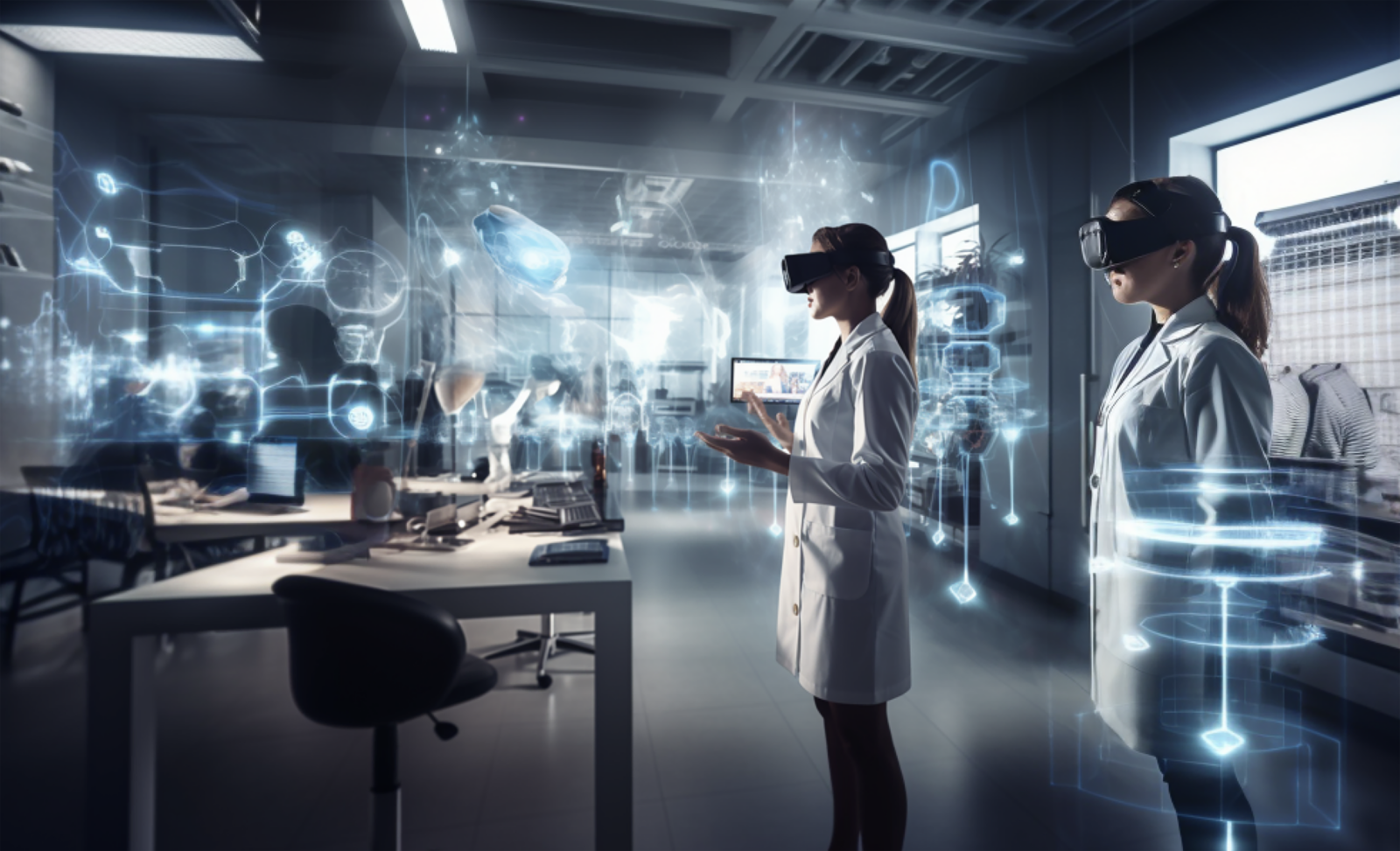On Oct. 23, the U.S. Department of Commerce’s Economic Development Administration (EDA) announced that a consortium of 25 public, private and academic partners — led the Greater Phoenix Economic Council (GPEC) — was awarded a Tech Hubs Strategic Development Grant focused on increasing biomedical device manufacturing in the region and the sector’s domestic competitiveness.
According to the EDA’s press release, the Medical Device Manufacturing Multiplier Strategy Development Consortium (MDM2) will leverage the grant to increase local coordination and planning activities to build up the region’s capacity to manufacture, commercialize and deploy technologies critical to U.S. economic and national security.
“This award will strengthen Arizona’s leadership in cutting edge bioscience innovation, creating more opportunities for investment and good-paying jobs,” Senator Mark Kelly says in the release. “The Regional Technology Hub program is designed to identify high-growth regions for critical industries, like Phoenix, so that we outcompete China and other adversaries in critical technology.”
Chris Camacho, president and CEO of GPEC, notes that the Greater Phoenix region has been growing its biomedical and bioscience for two decades and aims to become a national leader.
LEARN MORE: An analysis of what’s driving the Phoenix bioscience boom
“What has changed is that you see healthcare institutions like Mayo Clinic, Barrow’s Neurological Institute, Banner MD Anderson and others looking to expand clinical trials and diagnostics work,” he continues. “At the same time, a lot of medical device companies like Dexcom, Medtronic and Gore are expanding or relocating to Arizona.”
The $500,000 planning grant, along with an additional $200,000 of in-kind contributions from the market, is intended to crystalize the region’s strategy around medical devices, neuro diagnostics and precision medicine over the next 18 months. After this roadmap is built, Camacho explains that MDM2 will file for a full Tech Hubs designation, which could lead to an additional $40-$70 million in federal funds.
“We’re in the early stages of this implementation plan, because that was just announced [in October],” he says. “I expect the healthcare and biomedical sector — in addition to the semiconductor industry — to be one of our strongest over the next two decades, and this is a major step in that direction.”
Market bound
Bringing any innovation to market is an arduous process for any entrepreneur or company, but the task is even more daunting in the medical device space due to the burden of proof required to demonstrate a product’s safety. Kathleen Lee, senior vice president of regional initiatives at GPEC, notes that regulations exist for a reason and don’t necessarily impede innovation and productivity.
“In order for a medical device to be classified as therapeutic or diagnostic, it needs to go through an FDA approval process,” she explains. “The FDA classifies them into three classes depending on the level of risk and of potential harm. Medical devices have a more accelerated timeline compared to developing new drugs, but they do need to meet the FDA criteria depending on their classification.”
Chris Yoo, Ph.D. and general partner at Xcellerant Ventures, notes that there are three factors that founders need for success in the sector. First, Yoo says that more education is needed to understand the science behind a breakthrough and develop it into a product that can be commercialized. The regional ecosystem is also crucial for founders to connect with other resources.
“If you look at Boston, and you think about what drove these new revolutions in biology — like the ability to engineer genes and create products from that — it was being around universities and others who are interested in seeing the development of these technologies,” Yoo says.
The last piece is having investors who are willing to put money at risk in an industry that they might not understand well. Camacho adds that medical devices are capital intensive in general, and FDA approval lengthens the period between a breakthrough and the product being sold, so success “takes time, money and complicated science.”
WearTech Applied Research Center
Located at Park Central within the City of Phoenix’s new Phoenix Medical Quarter, the WearTech Applied Research Center was created by Partnership for Economic Innovation in 2019 to help launch a future-of-health technology ecosystem around Arizona’s flourishing biomedical scene. The center offers an engineering lab and community space for innovation teams bringing new technology to the market.
Randal Schulhauser, who sits on the advisory board for the WearTech Center, says the clustering of knowledge in the center provides tremendous value to innovators, whether that comes in form of technological assistance, advice on creating a successful business model or assessing a device’s clinical use case.
“The WearTech Center helps nascent entrepreneurs accelerate their idea,” Schulhauser continues. “The ultimate goal is for these startups to have an anchor here in Arizona, as opposed to having to go elsewhere to find expertise, guidance and money.”
One of these startups is CenSyn, which created a handheld device called PenEEG that collects essential brain activity data in 30 seconds that can be viewed on a phone or tablet. Typical EEG systems take significant time and know-how to operate, which can delay screening when that equipment is inaccessible. In December 2022, CenSyn announced a partnership with HonorHealth to conduct clinical studies.
“There’s significant grassroots level support [in Greater Phoenix] like the WearTech Center that’s focused on providing resources to promising early-stage ideas and startups that are working on tech hardware products,” explains Ayushi Patel, CEO of CenSyn. “It takes a lot to launch and test a physical product, so having that support early on provides the founder more resources to test their ideas and reiterate.”
CenSyn started in Irvine, CA, but Patel says the spirit of collaboration between health systems, universities and places such as the WearTech Center — along with less red tape and bureaucracy — made Arizona an attractive place to call home.
“[Those elements] are meaningful to an early-stage company like ours, where we don’t have all these resources we can deploy, so we have to leverage the existing network,” she continues. “We are staunch advocates for people who are in a similar space to ours to come here and utilize the resources that are available to help great companies get off the ground,” adding that the company has only benefitted from moving from California.
Large, established medical technology companies also see Greater Phoenix as a good place to do business. Paddy O’Brien, worldwide president for BD Peripheral Intervention, says that the company acquired a Tempe-based business about 30 years ago, and has since continued to grow operations in the region.
“We find that the vibrant nature of this community is unrivaled,” he continues. “There are other innovation hubs, and BD does have businesses in California, New Jersey and other pockets of the country, but we’ve had a great track record of partnering with Arizona State University and the University of Arizona for internships, and we retain a high percentage of those folks. The caliber of the employee base we’re able to attract here is impressive.”
O’Brien highlights the intellect required for these highly regulated and compliance focused companies that are coming to the Valley, which further strengthens the ecosystem. Having the presence of TSMC, Intel and others in the semiconductor sector boosts the region’s capacity to manufacture complex products.
“These industries are all related and, in a way, interdependent,” he concludes. “From our perspective, as we develop products that are in some cases permanent implants in patients, we need to have the highest quality components and systems that we can possibly have. When you look at the explosive growth of the region and the partnerships that exists, I think this GPEC opportunity [with the Tech Hubs Strategic Development Grant] represents another launching pad to put ourselves on the same level as the other top markets.”




